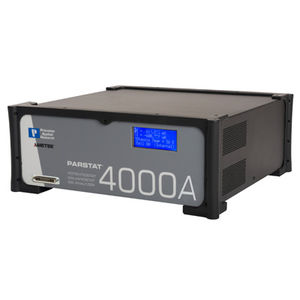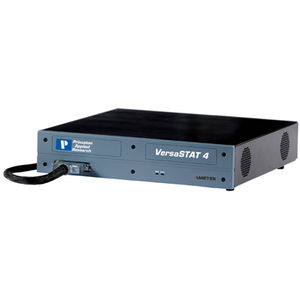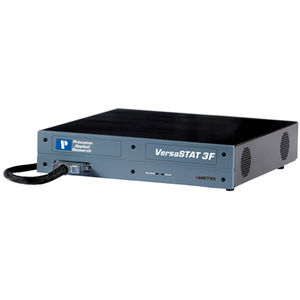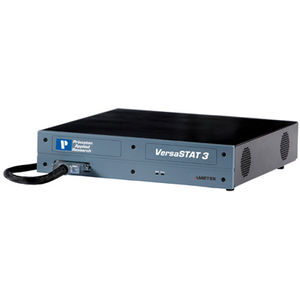
- Products
- 1-channel potentiostat
- Princeton Applied Research
Single-channel potentiostat PARSTAT® 3000A



Add to favorites
Compare this product
Characteristics
- Number of channels
- single-channel
Description
The PARSTAT® 3000A is a high-performance potentiostat engineered into a small foot-print for space conscious laboratory and/or application environments.
The additional voltage measurement (6-WIRE) makes this instrument well suited for Electrochemical Impedance Spectroscopy (EIS) on batteries as two impedance values can be simultaneously acquired.
Users can assign impedance values to anode and cathode; across separators; or to individual cells in a stack. Physical electrochemistry applications also benefit from using this input to capture pH measurements, temperature, or pressure by means of an external probe.
The Compliance Voltage (30 V) of the PARSTAT 3000A allows measurement in low conductivity (high impedance) solutions, such as ethanol, or when the Counter Electrode is isolated by a Bridge Tube with frit.
Matching Polarization Voltage (30 V) gives the PARSTAT 3000A the ability to take full advantage of this high Compliance for potential control in electrophoretic deposition or high-voltage anodization.
The PARSTAT 3000A provides accurate EIS measurements up to 7 MHz. This is made possible by:
Advanced calibration routines for overall improved accuracy across the entire range of frequency and impedance
Faster experiment duration, without sacrificing data quality typically associated with Multi-Sine EIS techniques
New algorithms that provide increased accuracy of signal amplitude at high frequency
Direct connection to energy-storage devices through the Maccor battery holders that eliminate impact from cell cable impedance
VIDEO
Catalogs
*Prices are pre-tax. They exclude delivery charges and customs duties and do not include additional charges for installation or activation options. Prices are indicative only and may vary by country, with changes to the cost of raw materials and exchange rates.










